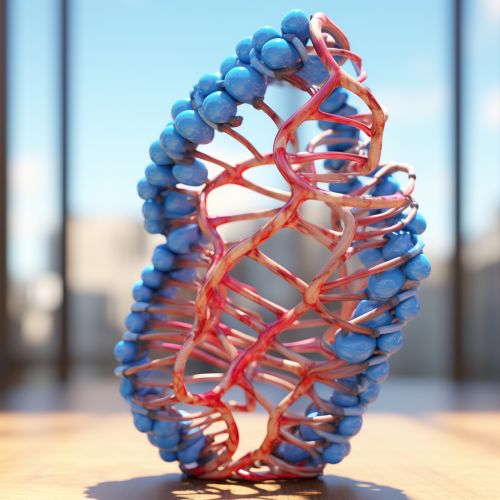Brain-derived neurotrophic factor
Introduction
Brain-derived neurotrophic factor (BDNF) is a protein that is encoded by the BDNF gene in humans. It is a member of the neurotrophin family of growth factors, which also includes nerve growth factor (NGF), neurotrophin-3 (NT-3), and neurotrophin-4 (NT-4). BDNF is found in the brain and the periphery and is vital for the survival, growth, and differentiation of neurons during development.


Structure and Function
BDNF is a small dimeric protein, with each monomer consisting of about 120 amino acids. It has a molecular weight of approximately 27 kDa. BDNF has a similar structure to all neurotrophins, which is characterized by three disulfide bonds that form a characteristic cystine knot structure. This structure is critical for the binding of BDNF to its high-affinity receptor, TrkB, and its low-affinity receptor, p75NTR.
BDNF plays a significant role in neuronal plasticity, which is the ability of the brain's synapses to change their strength. It is involved in various processes such as synaptic transmission, synaptic plasticity, and axonal growth. It is also essential for the survival and differentiation of various types of neurons in the central and peripheral nervous systems.
BDNF Gene
The BDNF gene is located on the short arm of chromosome 11 (11p13). The gene spans around 70 kb and is composed of 11 exons. The BDNF gene produces several different transcripts through alternative splicing, which results in different BDNF protein isoforms. These isoforms can have different functions and are distributed in different regions of the brain.
Role in the Brain
BDNF is widely distributed in the brain. It is most abundant in the hippocampus, cortex, and basal forebrain—areas vital for learning, memory, and higher thinking. BDNF is critical for long-term memory formation and consolidation through its role in long-term potentiation (LTP), a process that strengthens the connection between two neurons.
BDNF also plays a crucial role in neurogenesis, the process of generating new neurons from neural stem cells. It promotes the survival and differentiation of neural stem cells and progenitor cells in the hippocampus, a process that is essential for maintaining the plasticity of the brain.
Role in Disease
Alterations in BDNF expression and function have been associated with several neurological and psychiatric disorders. These include Alzheimer's disease, depression, schizophrenia, and bipolar disorder. In these conditions, decreased levels of BDNF have been reported in the brain and serum of patients, suggesting a role of BDNF in the pathophysiology of these disorders.
Therapeutic Potential
Given its crucial role in neuronal survival and function, BDNF has been considered a potential therapeutic target for various neurological and psychiatric disorders. Several strategies have been developed to increase BDNF levels in the brain, including pharmacological agents, gene therapy, and lifestyle interventions such as exercise and dietary changes.
